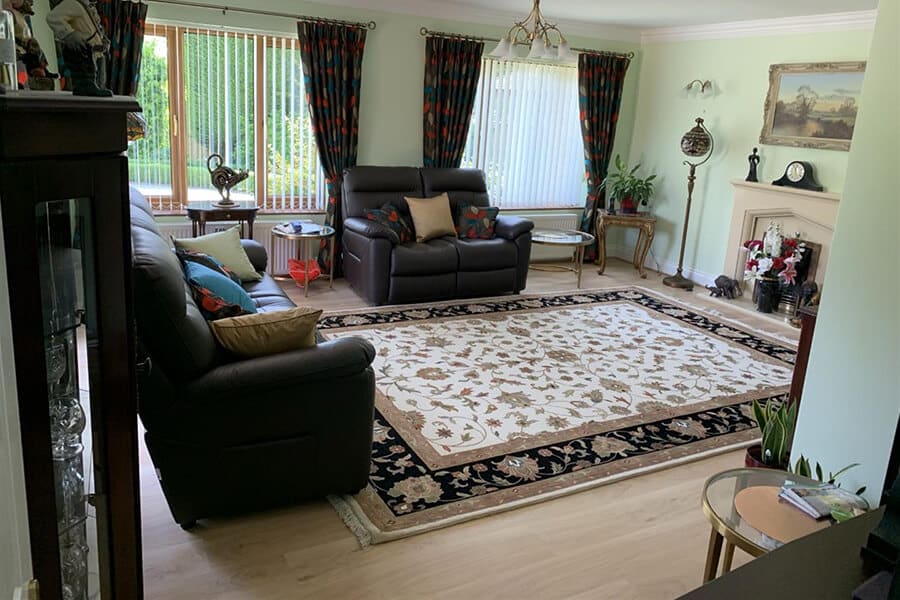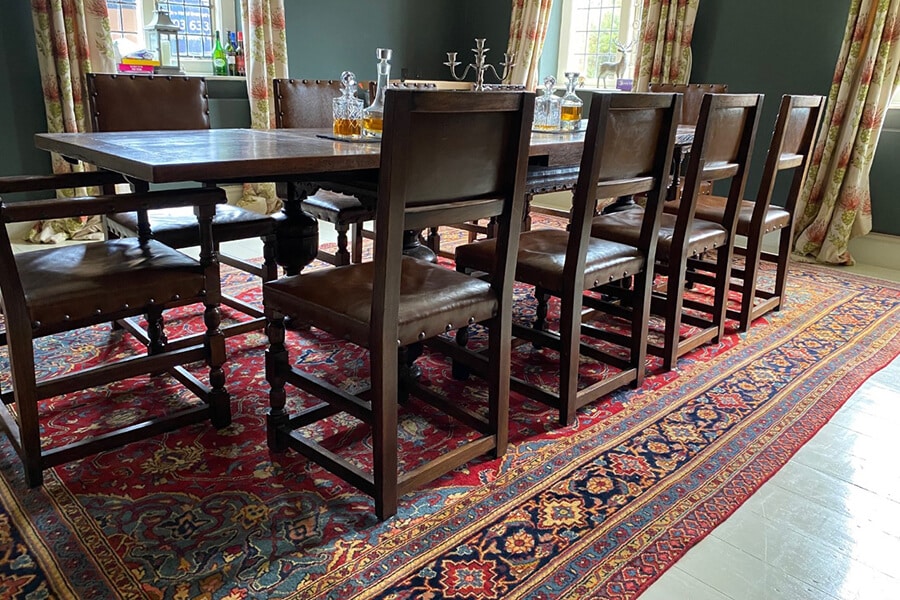The country of Afghanistan has long been known for crafting intricate, high quality, handmade rugs. But what do you need to know about these rugs before choosing to buy one? In this guide, we will explore what makes these rugs so special, and what to consider when choosing one of these rugs for your home.
What is an Afghan Rug?
Quite simply, an Afghan rug is a handmade rug that was hand-woven in Afghanistan. There are many different designs and weaving techniques that vary depending on the region where the rug was made. It is important to understand that similar rugs are also produced in the border areas of Pakistan. Typically, Afghan rugs are produced in the Northern provinces of the country such as Andkhoy City in Faryab or in the Kundoz region.
History of Afghan Rugs
Rug making in this country has a long history, with traditional carpet making dating back to the 16th century. It is believed that these rugs were used to keep dwellings warm during the winter months. It was around 1919-1921 when Afghan rugs became known for their artistry; King Amanullah Khan commissioned several intricate and visually stunning carpets – some of which can still be seen in museums today.
Although the industry suffered in 1979 during the Soviet invasion, with many people fleeing the country, it has made a comeback in recent years due to UNESCO declaring the rug-making practice to be a “Masterpiece of the Oral and Intangible Heritage of Humanity.” This crucial announcement has raised awareness for the art of rug weaving and they are once again known for their beauty and craftsmanship.
What are Afghan rugs made of?
Three main elements are needed when creating an Afghan rug. These include the warp (base), pile (surface) and the dyes. The base of the rug consists of vertical lines of yarn – usually made from wool or cotton, but occasionally made from silk. These lines of yarn are tied to a loom where they will have knots formed around them. This knotting technique creates what we call the pile of the rug and is what you will see on the surface of the rug. Afghan weavers mainly use wool or occasionally silk as the main material for the pile of their rugs.
There are a few different types of wool that can be used including Merino, Belgian and Ghazni wool. All of these types will affect the end result of the rug including the softness, durability and knot count. Merino wool creates a soft and almost silky appearance – in contrast, Ghazni wool is very durable and has a distinguished, abrash effect. Belgian wool, which is imported, has the same silky, shiny appearance as Merino wool, but is also lightweight and durable and often comes with a high knot count per square inch making it popular but more expensive than its counterparts.
How is an Afghan Rug made?
Although newer tools are now used making some steps more efficient and precise, such as clipping the pile evenly, the knotting itself is still done by hand and takes weeks or months of manual work on the wooden loom. The production of a hand-knotted rug can be divided into a few basic steps. The base of the rug (the warp) usually consists of sheep’s wool, silk, cotton, or a combination of these. The colouring of the pile fibres was originally carried out using natural vegetable dyes. Today, depending on the origin of the rug, synthetic dyes can also be used. The design is still drawn out with paper and pencil, whereas historically it was mostly created from memory. Depending on its origin, the knotting also differs in its knot type and density. After the actual knotting, a rug cannot yet be used, the final steps are still being carried out, such as clipping, washing and drying.
Characteristics of Genuine Afghan Rugs
If you’re looking to purchase an authentic handmade rug from Afghanistan, there are a few characteristics you can look out for to help make an informed decision.
● The patterns on Afghan rugs are often geometric and often include tribal motifs.
● Although Afghan rugs may look the same from a distance, they are hand-woven, and so each one is a unique item.
● The quality of an Afghan rug can be determined by its knots per square inch – the higher the number of knots, the higher the quality of the piece.
● The tightness of the weave can affect the price of an Afghan rug. Rugs with a higher knot count are usually more expensive as they take longer to make.
Colours
Rugs created in the Northern area of Balkh tend to be brighter and more colourful, whereas those created in the Southern province of Kandahar are often a bit darker and muted overall. An overall trend, however, is the use of red, blue, green, orange and yellow dyes that are brought together to create bold and contrasting designs which give them their characteristic appearance.
Tribal motifs
Within the umbrella of Afghan rugs, some sub-sections include different tribal elements which offer their own unique meaning and symbolism. By understanding the different designs created by different regions or tribes in Afghanistan, you can better understand the thought and diligence that goes into each piece.
● Single medallion: This is a very iconic and recognisable type of Afghan tribal rug. It features a single large medallion in the centre of the rug, surrounded by many smaller motifs.
● Multiple medallions: This type of Afghan tribal rug motif features multiple medallions, usually arranged in a symmetrical pattern.
● All-over patterns: These types of rug designs feature an overall pattern that covers the entire surface of the rug including geometric designs, floral motifs, and abstract patterns.
● Border designs: Many of these rugs feature intricate border designs along the edges. These can include geometric motifs, floral designs, or simply stripes.
● Tribal symbols: Some Afghan tribal rugs feature traditional symbols that are significant to the specific tribe that created the rug. These can include stylised animals, plants, or geometric shapes.
Cleaning Your Afghan Rug
You will need to take your handmade Afghan Rug to a specialist rug cleaner for a periodic deep clean. Lots of rugs woven in this region are woven by tribespeople. Consequently, dyes and colours are occasionally less stable than some more commercial-type weaving – this is especially true of older rugs. Whilst stains and spills can be cleaned off with warm water and some gentle proprietary brands can be used – see our Rug Care Guide – for further cleaning please contact us – we will be happy to advise you on the best way of caring for your rug.
What to consider when purchasing an Afghan Rug
There are a few things to take into consideration when buying a new rug, such as where it will be used, how much ‘traffic’ the room gets, the light levels, your current furnishings and of course – your personal style preferences. If you need assistance when choosing your Afghan rug, we offer a bespoke Home Visits service whereby we bring a selection of rugs to your home to help you decide on the perfect rug for your space. Please don’t hesitate to contact us if you see a rug online and you require any additional information – we are more than happy to help.


